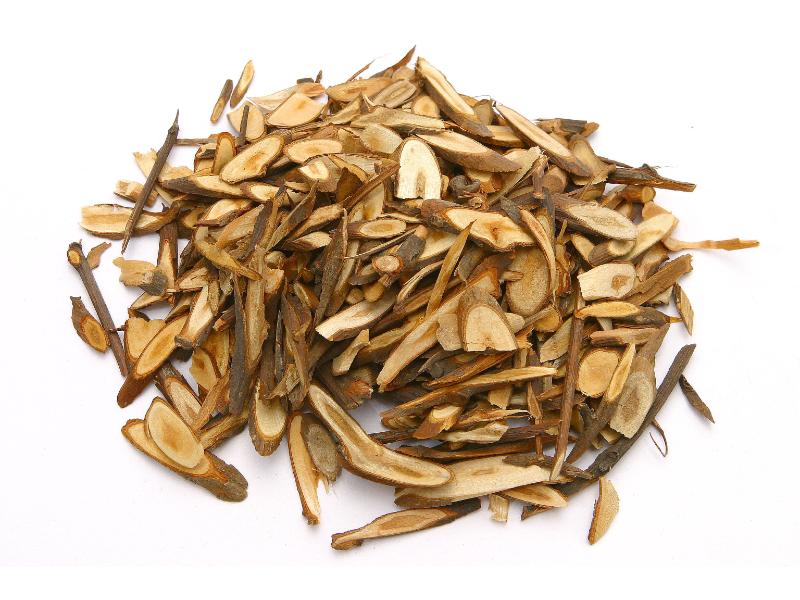Search in medicinals
Cinnamomi Ramulus
Cinnamon twig
桂枝 〔桂枝〕 guì zhī

Alternate English names: cassia twig Chinese cinnamon twig
Alternate Chinese names: 柳桂 liǔ guì
Kingdom: Plant
Origin in PRC Pharmacopoeia: Cinnamomum cassia Presl. (PRC Pharmacopoeia)
Origin in unofficial sources: Cinnamomum cassia Presl*
Use: Medicinal and alimentary
Category: Exterior-resolving agents / Warm acrid exterior-resolving agents
Properties: Acrid, sweet; warm.
Channel entry: Lung, heart, and bladder channels.
Actions and indications:
- Promotes sweating and resolves the exterior: Common cold due to external contraction of wind-cold, manifesting with headache, heat effusion, and aversion to cold.
- Warms and frees the channels: Patterns of congealing cold and blood stasis; wind-cold-damp impediment (fēng hán shī bì) patterns.
- Additional actions: Guì zhī also treats yáng vacuity and congealing cold in the kidney and bladder with impaired qì transformation, characterized by inhibited urination and water swelling. For this purpose, it is combined with medicinals that disinhibit urine such as Fú líng (茯苓 Poria , poria) and Zhū líng (猪苓 Polyporus , polyporus).
- This combination appears in the formula
wulingsan , which warms yáng and promotes qì transformation, disinhibits urine, and abates swelling.
Dosage and method: Oral: 3–10g in decoctions. Guì zhī is also occasionally used externally; it is frequently found in liniments for injury from knocks and falls, such as liniments used for martial arts injuries.
Warnings: Guì zhī is acrid and warm and enters provisioning-blood. It is contraindicated in internal repletion heat patterns, yīn vacuity with effulgent fire, and frenetic movement of hot blood. Use with care in pregnancy.
Product description: These twigs are about 1 mm thick, straight, with a purplish cortex and pale brown interior wood. The decocting pieces are oblique slices.
Quality: A strong, sweet, pungent taste and powerful aroma are signs of good quality.
Production area: Guǎngdōng, Guǎngxī, and Yúnnán, Vietnam, India, and Cambodia.
Etymology: The name guì zhī 桂枝, literally cinnamon twig.